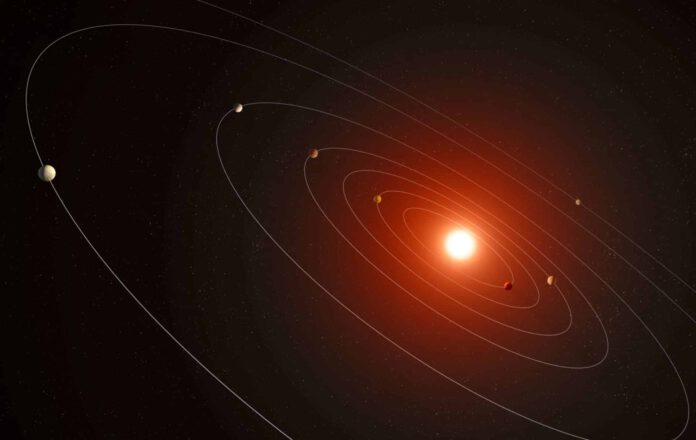
An Exciting Discovery in the Cosmic Sea
Five years after the cessation of the work of the Kepler space telescope, scientists have announced an exciting discovery within the vast data accumulated by the equipment. A new solar system, home to an impressive seven planets, has caught the attention of the scientific community.
The newfound planets orbit around Kepler-385, a sun-like star that is 10% larger and 5% warmer than our sun. The inner two planets are slightly bigger than Earth and likely rocky. They are also thought to possess thin atmospheres. The outer five planets, meanwhile, are estimated to be around twice the size of our home planet with what are suspected to be dense atmospheres.
What Makes This System Special
This system is extraordinary for several reasons. Firstly, to our knowledge, there are only a few solar systems with more than six verified planets. Moreover, it’s intriguing that this system is composed entirely of planets that are scorching hot. According to researcher Jack Lissauer, “Kepler-385 is the first discovered planetary system that hosts seven hot planets.”
The Searing Heat of These Planets
Kepler carefully studied Kepler-385 and noticed reductions in brightness that suggested the existence of planets. The existence of some of these planets was confirmed back in 2014. Still, a reanalysis of old Kepler data has now allowed researchers to promote the remaining candidate planets around Kepler-385 to planetary status. This brings the total number of discovered planets around this star to seven. Additionally, the researchers can fairly accurately determine the characteristics of these planets, such as their size, nature (rocky or not), and atmosphere. It’s also known that these planets are very close to their star and thus bathe in starlight, which explains their intense heat.
Significance of the Discovery
This new research shows that there is still a wealth of information to be extracted from the Kepler mission, even though it has already ended,” says researcher Jason Steffen. “By investigating these distant planetary systems, we gain a better understanding of our own history and how it diverges from the histories of other systems.”
About the Research
The discovery of seven planets orbiting Kepler-385 is just one of the highlights of new research in which scientists have reevaluated data collected by Kepler between 2009 and 2018. The goal was not only to confirm the existence of several candidate planets through this analysis; researchers also wanted to depict the discovered planets more accurately. “Now that we’ve had some time to analyze the data, we can refine our estimates regarding some properties of planets in different systems – such as their orbital period and size”, explains Steffen. “This is the ultimate catalog of planets discovered during the Kepler mission.” This ‘catalog’ includes nearly 4,400 (candidate-)planets. Some of these planets are not alone but are accompanied by one or more planets: the new catalog identifies over 700 of these multi-planetary systems. “We have assembled the most accurate list of planet candidates discovered by Kepler and their properties to date,” concludes Lissauer.
Role of Gaia
This new catalog was made possible by other observatories as well. Researchers, for instance, leveraged Gaia: a satellite that can very accurately determine the distance, position, and movements of stars and monitor changes in their brightness. These data provide more information about the stars in question and are also relevant for our understanding of potential planets that orbit them. Researchers can use the Gaia data, for example, to accurately determine a planet’s orbital period.
A Promising Future
The catalog is more than just an end product; researchers hope that it paves the way for future explorations and a better understanding of other planetary systems, and thereby, provides insight into how unique our system—with its capacity to support life—is.











